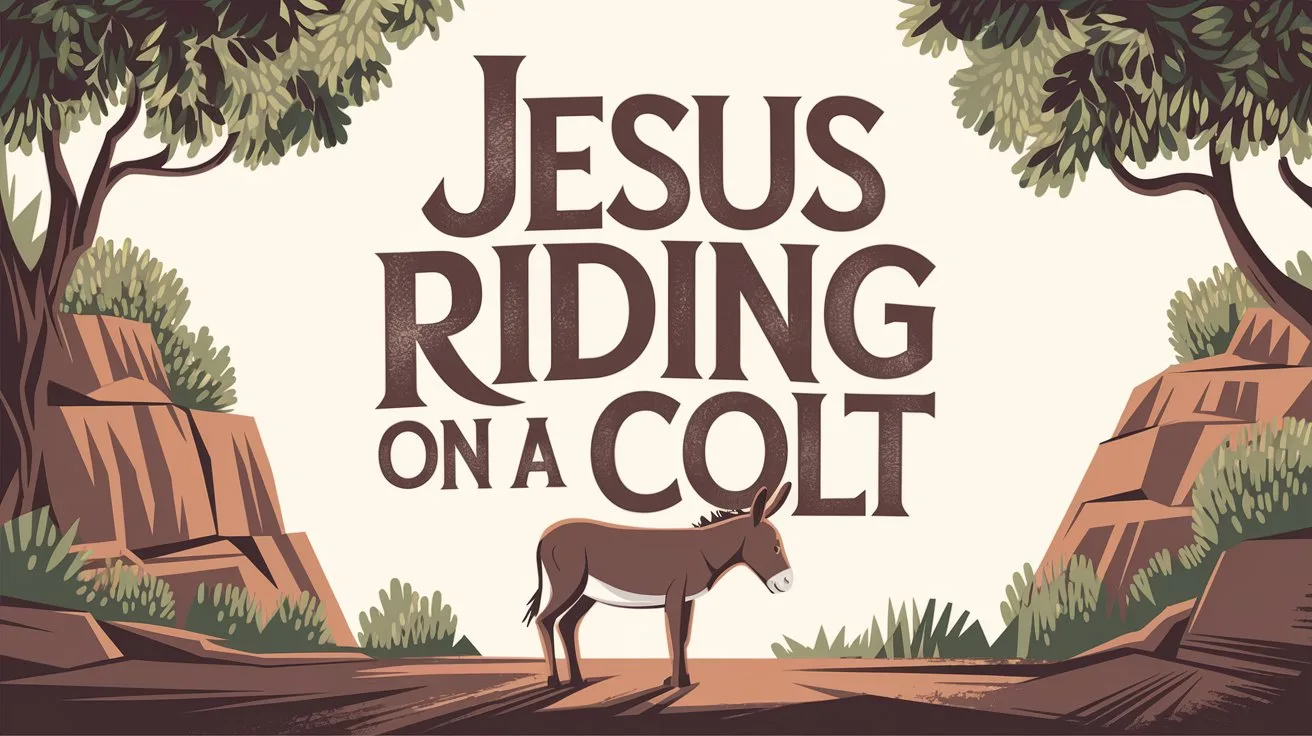The prophecy of Jesus riding into Jerusalem on a colt is found in Zechariah 9:9, where it is written:
“Rejoice greatly, O daughter of Zion! Shout, O daughter of Jerusalem! Behold, your King is coming to you; He is just and having salvation, lowly and riding on a donkey, a colt, the foal of a donkey.”
This was written around 500 years before the birth of Christ. Zechariah, speaking by the Spirit, described a coming King (not mounted on a warhorse) but humble and riding on a young donkey. This prophecy stood out because kings entered cities on horses as conquerors; but this King would come gently, offering peace.
The Fulfillment in the Gospels
This prophecy was fulfilled in detail during what we now call the Triumphal Entry, just days before Jesus’ crucifixion. In Matthew 21:2–5, Jesus sends two disciples to fetch a donkey and a colt, saying:
“Go into the village opposite you, and immediately you will find a donkey tied, and a colt with her. Loose them and bring them to Me… All this was done that it might be fulfilled which was spoken by the prophet, saying: ‘Tell the daughter of Zion, Behold, your King is coming to you, lowly, and sitting on a donkey, a colt, the foal of a donkey.’”
Mark 11:7 and Luke 19:35 both confirm that Jesus sat on the colt. John’s Gospel emphasizes the fulfillment of prophecy as well:
“Then Jesus, when He had found a young donkey, sat on it; as it is written: ‘Fear not, daughter of Zion; Behold, your King is coming, sitting on a donkey’s colt’” (John 12:14–15).
The disciples obeyed, the colt was where Jesus said it would be, and He entered Jerusalem exactly as foretold.
Why This Detail Matters
First, it reveals Jesus as the prophesied Messiah. He didn’t manipulate the moment to fulfill prophecy; rather, the moment was divinely prepared and perfectly timed. Every step into Jerusalem was a step into Scripture.
Second, it testifies of His humility and peace. The donkey, especially a colt never ridden before (Mark 11:2), was a symbol of meekness. Jesus didn’t come to conquer Rome; He came to conquer sin. His first coming was in gentleness; His second will be in glory (Revelation 19:11)—then He rides a white horse.
Third, this moment divides history. The crowds shouted “Hosanna! Blessed is He who comes in the name of the LORD!” (Psalm 118:26), yet within days, those same voices cried “Crucify Him!” The entry into Jerusalem marked the beginning of His Passion. The colt was not just a detail; it was the declaration that the King had come, and that He was coming to die.
Fourth, this shows His divinity. Jesus knew the colt would be there, untouched, ready. He knew the hearts of those who would question the disciples. Nothing surprised Him. Every act was under divine control.
My Final Thoughts
The prophecy of Jesus riding a colt is not a poetic footnote; it’s a proclamation. It tells us that our King comes not in the pride of flesh, but in the power of meekness. He comes prepared, intentional, and submitted to the Father’s will.
He didn’t come to force submission through might, but to offer salvation through humility. The colt carried more than a man; it bore the weight of prophecy, the hope of Israel, and the Lamb of God on His way to the altar. Let us be like that colt (ready, untouched by the world, and set apart for the King’s use).





 Get the book that teaches you how to evangelize and disarm doctrines from every single major cult group today.
Get the book that teaches you how to evangelize and disarm doctrines from every single major cult group today.